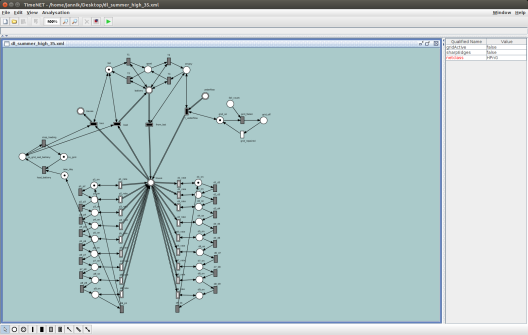HYPEG - A tool for the simulation and analysis of HPnG Models
In order to model critical infrastructures, hybrid models are needed that combine both, discrete and continuous components (e.g. for modelling discretely controlled physical systems). In addition, stochastic variables describe random events, like failure and repair processes.
So-called stochastic hybrid systems have been successfully used in the past to model safety-critical applications. They are especially useful to describe the evolution of physical processes in a user-friendly way.
Next to the development of new methods and techniques, the group also focuses on the development of tools which allow the comparison of methods and results and ease the modelling and evaluation of real systems. The main focus lies on the model formalism of hybrid Petri nets with general transitions (HPnG).
HYPEG
Currently there is a great amount of algorithms that have recently been implemented for the analysis and simulation of HPnG models. It is the aim of HYPEG to combine all these in one Java code library. This should introduce a much better overview on the available solution techniques. Furthermore a single code base reduces redundancy and hence eases the effort maintain the code a lot. HYPEG should provide a good basis for Bachelor and Master theses and other research projects.
Links
HYPEG is a OpenSource project and available on Git, including a wiki as introduction.

Visualization with TimeNET
TimeNET is a graphical user interface that allows the implementations of net graphs. We extended TimeNET to support the formalism of the hbrid Petri nets and hence build a very comfortable way to describe systems based on HPnG models. Currently we implment the integration of HYPEG within TimeNET to introduce a all-in-one software that is suitable to model, analyze and simulate complex hybrid Petri nets.
Contact
If you have any questions, please don't hesitate to contact the authors:

